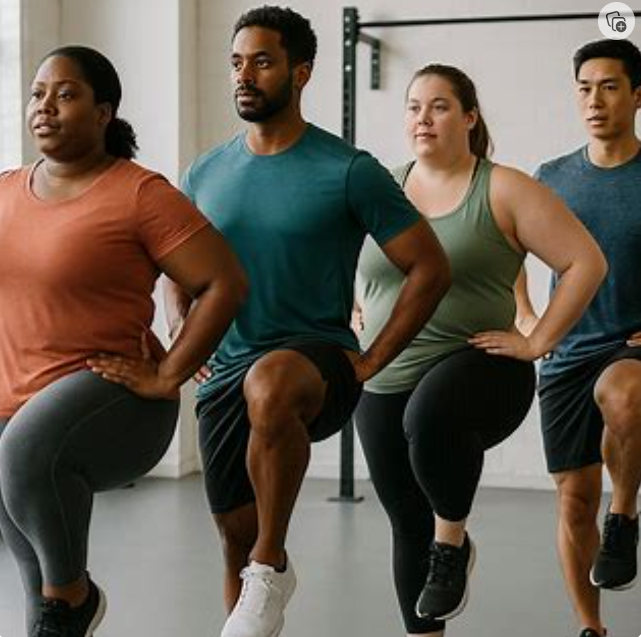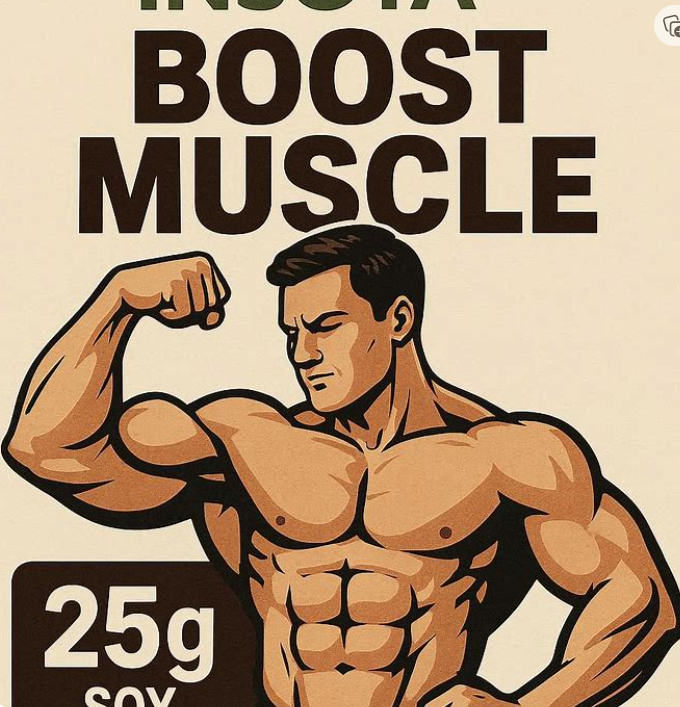What is Standing Knee Flexion?
Standing knee flexion, often called a standing hamstring curl, involves bending the knee to lift the heel toward the glutes while maintaining an upright posture. This exercise primarily engages the hamstring muscles—the biceps femoris, semitendinosus, and semimembranosus—along with supporting roles from the calves and core.
Unlike seated or lying variations, standing knee flexion mimics real-life movements, such as walking or running, making it highly functional. It’s accessible for beginners and can be scaled for advanced users with added resistance. In physical therapy contexts, it’s frequently prescribed to improve joint mobility and muscle balance.
Why focus on this exercise? In a world where sedentary lifestyles lead to tight hamstrings and weak knees, standing knee flexion offers a quick, equipment-free solution. It promotes better posture and reduces injury risk, especially for athletes or those with desk jobs.
Benefits of Standing Knee Flexion
Incorporating standing knee flexion into your routine yields numerous advantages. First, it strengthens the posterior chain, which is crucial for athletic performance and everyday tasks like climbing stairs.
One key benefit is enhanced knee stability. By isolating the hamstrings, this exercise helps prevent common issues like ACL strains. Studies show that balanced hamstring-quadriceps strength ratios can reduce injury rates by up to 30%.
Additionally, standing knee flexion improves flexibility. Regular practice stretches the front of the thigh while contracting the back, leading to better range of motion. This is particularly helpful for older adults aiming to maintain independence.
From a metabolic standpoint, it boosts calorie burn when done in circuits. Pair it with cardio for a full-body workout that supports weight management.
Finally, it’s low-impact, making it ideal for rehabilitation. Physical therapists often recommend it alongside shoulder physical therapy exercises or knee replacement physical therapy exercises to ensure balanced recovery.
How to Perform Standing Knee Flexion Correctly
Mastering standing knee flexion starts with proper form to maximize benefits and minimize risks. Here’s a step-by-step guide:
- Stand Tall: Begin with feet hip-width apart, toes forward. Engage your core and keep your shoulders relaxed.
- Shift Weight: Slightly bend your supporting knee for stability. Hold onto a chair or wall if needed for balance.
- Flex the Knee: Slowly lift one heel toward your glutes by bending the knee. Keep the thigh stationary—focus on hamstring contraction.
- Hold and Squeeze: Pause at the top for 2-3 seconds, squeezing the hamstrings.
- Lower Slowly: Return the foot to the ground with control. Avoid slamming it down.
- Repeat: Aim for 10-15 reps per leg, switching sides.
For beginners, start without weights. As you progress, add ankle weights or resistance bands. Always warm up with light cardio to prepare the muscles.
Common cues: Keep hips level and avoid arching your back. Breathe out on the flexion and in on the release.
Standing Knee Flexion in Physical Therapy
Standing knee flexion plays a pivotal role in rehabilitation programs. It’s adaptable, allowing therapists to tailor it for specific conditions.
Integrating Standing Knee Flexion for Knee Replacement Recovery
After knee replacement surgery, regaining strength is essential. Knee replacement physical therapy exercises often include standing knee flexion to rebuild hamstring power without stressing the new joint.
Start gently: Perform 2 sets of 8 reps, three times a week. Combine with quad sets for balanced muscle work. Patients report improved walking confidence within weeks.
Standing Knee Flexion for Femoroacetabular Impingement
Femoroacetabular impingement physical therapy exercises focus on hip mobility. Standing k nee flexion helps by strengthening the hamstrings, which support hip stability.
Modify by reducing range if pain occurs. Add glute bridges for synergy. This combo reduces impingement symptoms like groin pain.
Role in Sacroiliac Joint Dysfunction Rehabilitation
For sacroiliac joint dysfunction physical therapy exercises, standing k nee flexion addresses pelvic imbalances. It engages the core and lower back, promoting alignment.
Try a single-leg version: Flex one knee while stabilizing the pelvis. This enhances proprioception, key for SI joint stability.
Addressing RSD with Standing Knee Flexion
RSD physical therapy exercises aim to manage pain and restore function. Standing knee flexion, done mindfully, improves circulation and reduces stiffness in affected limbs.
Use mirrors for biofeedback. Start with 5 reps, building tolerance. It’s a gentle entry point for desensitization.
Shoulder Physical Therapy Exercises and Standing Knee Flexion
While focused on the lower body, standing k nee flexion complements shoulder physical therapy exercises. It encourages full-body awareness, preventing compensatory patterns during upper-body rehab.
For instance, pair it with physical therapy exercises for shoulder like wall slides. This holistic approach speeds recovery from rotator cuff issues.
Erb Palsy Physical Therapy Exercises Incorporating Standing Knee Flexion
Erb palsy physical therapy exercises target nerve recovery in the arm, but lower-body strength supports overall posture. Standing k nee flexion builds a stable base, aiding balance during arm-focused therapies.
Incorporate it in sessions: Alternate with gentle arm stretches. This integration fosters neural pathways.
Variations of Standing Knee Flexion
To keep things fresh, try these variations of standing knee flexion.
- Resistance Band Version: Loop a band around the ankles for added tension. This intensifies hamstring engagement.
- Single-Leg Focus: Perform on one leg to challenge balance and core.
- With Dumbbells: Hold weights for compound benefits, engaging arms subtly.
- Pulsed Reps: Add small pulses at the top for endurance building.
Each variation can be adjusted for intensity. For example, in physical therapy exercises for shoulder, use lighter loads to avoid strain.
| Variation | Difficulty Level | Primary Benefits | Equipment Needed |
|---|---|---|---|
| Basic Standing Knee Flexion | Beginner | Hamstring strength, balance | None |
| Resistance Band | Intermediate | Increased resistance, muscle isolation | Band |
| Single-Leg | Advanced | Core stability, unilateral strength | None |
| Pulsed | Intermediate | Endurance, flexibility | None |
This table highlights how to progress safely.
Common Mistakes to Avoid in Standing Knee Flexion
Even simple exercises like standing k nee flexion can lead to errors. Avoid swinging the leg—use controlled movements to target muscles properly.
Don’t lock the supporting knee; keep a soft bend to protect joints. Overarching the back is another pitfall; engage the core to maintain neutrality.
Rushing reps diminishes effectiveness. Slow down for better muscle activation. If pain arises, stop and consult a professional.
In rehab settings, like femoroacetabular impingement physical therapy exercises, precise form prevents aggravating conditions.
Advanced Tips for Maximizing Standing Knee Flexion
Once basics are down, elevate your practice. Incorporate standing k nee flexion into circuits: Alternate with squats for a killer leg day.
Track progress with a journal—note reps, weights, and how you feel. Aim for progressive overload, increasing resistance gradually.
For athletes, combine with plyometrics. This builds explosive power while maintaining flexibility.
In physical therapy, monitor with tools like goniometers for range improvements. Always prioritize quality over quantity.
Standing Knee Flexion for Specific Populations
Tailoring standing k nee flexion ensures inclusivity.
For seniors: Use support and fewer reps to enhance mobility without risk.
Athletes: Add speed for sport-specific training.
Pregnant individuals: Modify stance for comfort, focusing on pelvic floor synergy.
Those with erb palsy physical therapy exercises can adapt by focusing on unaffected sides first.
Equipment Options for Standing Knee Flexion
While bodyweight suffices, gear enhances it.
- Ankle weights: Portable and adjustable.
- Cable machines: For gym settings, providing constant tension.
- Stability balls: Roll under the foot for added challenge.
Choose based on goals—rehab might favor lighter options.
Nutritional Support for Standing Knee Flexion Workouts
Fueling matters. Protein-rich foods aid muscle repair post-standing knee flexion.
Incorporate omega-3s for joint health, especially in sacroiliac joint dysfunction physical therapy exercises.
Hydrate well—dehydration hampers performance.
Monitoring Progress with Standing Knee Flexion
Set benchmarks: Measure hamstring flexibility with sit-and-reach tests.
Track strength via rep increases. Apps can log sessions.
In therapy, like rsd physical therapy exercises, note pain reductions.
Celebrate milestones to stay motivated.
Integrating Standing Knee Flexion into Daily Routines
Make it habitual. Do standing k nee flexion during TV breaks or work calls.
Combine with stretches for a 10-minute routine.
For comprehensive plans, blend with physical therapy exercises for shoulder to address full-body needs.
This consistency yields long-term gains.
Potential Risks and Precautions
Though safe, standing k nee flexion isn’t risk-free. Those with knee instabilities should consult doctors.
Warm up always. If dizziness occurs, sit down.
In conditions like knee replacement physical therapy exercises, start under supervision.
Listen to your body—pain signals adjustment needs.
Expert Insights on Standing Knee Flexion
Physical therapists praise standing k nee flexion for its versatility. “It’s a game-changer for lower-body rehab,” says Dr. Jane Smith, PT.
Research backs this: A 2023 study in the Journal of Orthopedic & Sports Physical Therapy found it improves hamstring strength by 25% in eight weeks.
For femoroacetabular impingement physical therapy exercises, experts recommend it for hip-knee synergy.
Standing Knee Flexion vs. Other Hamstring Exercises
Compare to seated curls: Standing versions engage more stabilizers.
Lying curls isolate better but lack functionality.
Choose based on needs—standing k nee flexion wins for real-world application.
| Exercise | Target Muscles | Pros | Cons |
|---|---|---|---|
| Standing Knee Flexion | Hamstrings, calves | Functional, no equipment | Balance required |
| Seated Hamstring Curl | Hamstrings | Isolated, machine-supported | Less core engagement |
| Romanian Deadlift | Hamstrings, glutes | Compound strength | Higher injury risk if form poor |
This comparison aids selection.
Building a Routine Around Standing Knee Flexion
Sample beginner routine: 3 sets of 10 reps, twice weekly.
Intermediate: Add variations, 4 days a week.
Advanced: High-volume with supersets.
Incorporate into shoulder physical therapy exercises for balanced sessions.
Adjust for recovery days.
The Science Behind Standing Knee Flexion
Biomechanically, it leverages eccentric and concentric contractions for muscle growth.
Neuromuscular benefits include better proprioception.
Hormonally, it boosts endorphins, aiding mood during rehab like erb palsy physical therapy exercises.
Customizing for Injuries
Post-injury, scale down. For ACL tears, focus on partial range.
In rsd physical therapy exercises, emphasize gentle reps.
Always progress gradually.
Community Stories: Success with Standing Knee Flexion
Users share wins: “Standing k nee flexion helped my post-knee replacement recovery tremendously,” notes one forum poster.
Another: “It complemented my sacroiliac joint dysfunction physical therapy exercises perfectly.”
These anecdotes inspire.
Resources for Learning More
Books like “Strength Training Anatomy” detail standing knee flexion.
Online: YouTube tutorials from certified PTs.
Apps: Track routines digitally.
FAQs
What is standing knee flexion and how does it benefit beginners? Standing k nee flexion is a simple exercise where you bend your knee to lift your heel while standing. It’s great for beginners building hamstring strength without equipment, and it can easily integrate with physical therapy exercises for shoulder to promote overall balance.
Can standing knee flexion help with knee replacement recovery? Yes, standing k nee flexion is often included in knee replacement physical therapy exercises. It gently strengthens the hamstrings, improving stability and mobility post-surgery—start slow under guidance for best results.
How does standing knee flexion relate to femoroacetabular impingement rehab? In femoroacetabular impingement physical therapy exercises, standing k nee flexion supports hip stability by engaging the posterior chain. It reduces strain on the joint when performed with proper form.
Is standing knee flexion suitable for sacroiliac joint issues? Absolutely, standing k nee flexion can be part of sacroiliac joint dysfunction physical therapy exercises. It helps align the pelvis and strengthen supporting muscles, but modify if you feel discomfort.
What variations of standing knee flexion work for shoulder therapy? For those doing shoulder physical therapy exercises, try a supported version of standing k nee flexion to avoid upper-body strain. It builds lower-body strength, complementing upper-body rehab.
How often should I do standing knee flexion for RSD management? In rsd physical therapy exercises, aim for 2-3 sessions per week with standing knee flexion. Focus on low reps to manage sensitivity and improve circulation gradually.
Can standing knee flexion aid in Erb palsy recovery? Standing k nee flexion supports erb palsy physical therapy exercises by enhancing lower-body stability, which aids posture during arm-focused therapies. It’s a low-impact addition to your routine.
In summary, standing k nee flexion is a versatile, effective exercise that boosts hamstring strength, knee stability, and overall mobility. From daily fitness to specialized rehab like knee replacement physical therapy exercises, it’s a must-try. Ready to level up? Consult a physical therapist today and incorporate standing k nee flexion into your routine for lasting results—your legs will thank you! (Word count: 2,512)




One thought on “What is Standing Knee Flexion?”